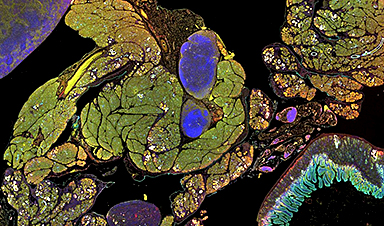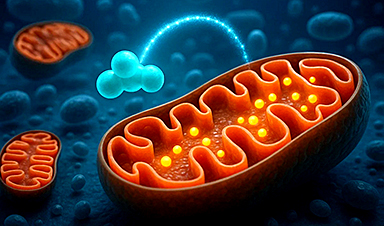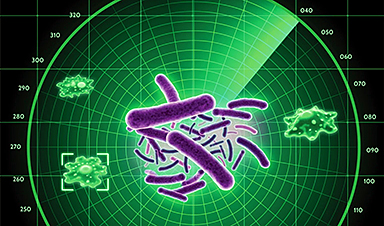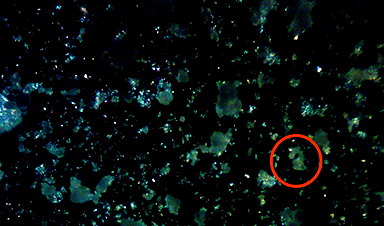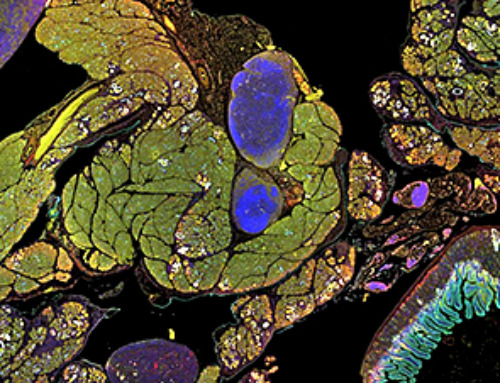Artificial intelligence can predict on- and off-target activity of CRISPR tools that target RNA instead of DNA, according to new research published in Nature Biotechnology.
CRISPR is a gene editing technology with many uses in biomedicine and beyond, from treating sickle cell anemia to engineering tastier mustard greens. It often works by targeting DNA using an enzyme called Cas9. In recent years, scientists discovered another type of CRISPR that instead targets RNA using an enzyme called Cas13.
RNA-targeting CRISPRs can be used in a wide range of applications, including RNA editing, knocking down RNA to block expression of a particular gene, and high-throughput screening to determine promising drug candidates. Researchers at NYU and the New York Genome Center created a platform for RNA-targeting CRISPR screens using Cas13 to better understand RNA regulation and to identify the function of non-coding RNAs. Because RNA is the main genetic material in viruses including SARS-CoV-2 and flu, RNA-targeting CRISPRs also hold promise for developing new methods to prevent or treat viral infections. Also, in human cells, when a gene is expressed, one of the first steps is the creation of RNA from the DNA in the genome.
A key goal of the study is to maximize the activity of RNA-targeting CRISPRs on the intended target RNA and minimize activity on other RNAs which could have detrimental side effects for the cell. Off-target activity includes both mismatches between the guide and target RNA as well as insertion and deletion mutations.
Earlier studies of RNA-targeting CRISPRs focused only on on-target activity and mismatches; predicting off-target activity, particularly insertion and deletion mutations, has not been well-studied. In human populations, about one in five mutations are insertions or deletions, so these are important types of potential off-targets to consider for CRISPR design.
“Similar to DNA-targeting CRISPRs such as Cas9, we anticipate that RNA-targeting CRISPRs such as Cas13 will have an outsized impact in molecular biology and biomedical applications in the coming years,” said Neville Sanjana, associate professor of biology at NYU, associate professor of neuroscience and physiology at NYU Grossman School of Medicine, a core faculty member at New York Genome Center, and the study’s co-senior author. “Accurate guide prediction and off-target identification will be of immense value for this newly developing field and therapeutics.”
In their study in Nature Biotechnology, Sanjana and his colleagues performed a series of pooled RNA-targeting CRISPR screens in human cells. They measured the activity of 200,000 guide RNAs targeting essential genes in human cells, including both “perfect match” guide RNAs and off-target mismatches, insertions, and deletions.
Sanjana’s lab teamed up with the lab of machine learning expert David Knowles to engineer a deep learning model they named TIGER (Targeted Inhibition of Gene Expression via guide RNA design) that was trained on the data from the CRISPR screens. Comparing the predictions generated by the deep learning model and laboratory tests in human cells, TIGER was able to predict both on-target and off-target activity, outperforming previous models developed for Cas13 on-target guide design and providing the first tool for predicting off-target activity of RNA-targeting CRISPRs.
“Machine learning and deep learning are showing their strength in genomics because they can take advantage of the huge datasets that can now be generated by modern high-throughput experiments. Importantly, we were also able to use ‘interpretable machine learning’ to understand why the model predicts that a specific guide will work well,” said Knowles, assistant professor of computer science and systems biology at Columbia University’s School of Engineering and Applied Science, a core faculty member at New York Genome Center, and the study’s co-senior author.
“Our earlier research demonstrated how to design Cas13 guides that can knock down a particular RNA. With TIGER, we can now design Cas13 guides that strike a balance between on-target knockdown and avoiding off-target activity,” said Hans-Hermann (Harm) Wessels, the study’s co-first author and a senior scientist at the New York Genome Center, who was previously a postdoctoral fellow in Sanjana’s laboratory.
The researchers also demonstrated that TIGER’s off-target predictions can be used to precisely modulate gene dosage—the amount of a particular gene that is expressed—by enabling partial inhibition of gene expression in cells with mismatch guides. This may be useful for diseases in which there are too many copies of a gene, such as Down syndrome, certain forms of schizophrenia, Charcot-Marie-Tooth disease (a hereditary nerve disorder), or in cancers where aberrant gene expression can lead to uncontrolled tumor growth.
“Our deep learning model can tell us not only how to design a guide RNA that knocks down a transcript completely, but can also ‘tune’ it—for instance, having it produce only 70% of the transcript of a specific gene,” said Andrew Stirn, a Ph.D. student at Columbia Engineering and the New York Genome Center, and the study’s co-first author.
By combining artificial intelligence with an RNA-targeting CRISPR screen, the researchers envision that TIGER’s predictions will help avoid undesired off-target CRISPR activity and further spur development of a new generation of RNA-targeting therapies.
“As we collect larger datasets from CRISPR screens, the opportunities to apply sophisticated machine learning models are growingly rapid. We are lucky to have David’s lab next door to ours to facilitate this wonderful, cross-disciplinary collaboration. And, with TIGER, we can predict off-targets and precisely modulate gene dosage which enables many exciting new applications for RNA-targeting CRISPRs for biomedicine,” said Sanjana.
This latest study further advances the broad applicability of RNA-targeting CRISPRs for human genetics and drug discovery, building on the NYU team’s prior work to develop guide RNA design rules, target RNAs in diverse organisms including viruses like SARS-CoV-2, engineer protein and RNA therapeutics, and leverage single-cell biology to reveal synergistic drug combinations for leukemia.
News
Studies detail high rates of long COVID among healthcare, dental workers
Researchers have estimated approximately 8% of Americas have ever experienced long COVID, or lasting symptoms, following an acute COVID-19 infection. Now two recent international studies suggest that the percentage is much higher among healthcare workers [...]
Melting Arctic Ice May Unleash Ancient Deadly Diseases, Scientists Warn
Melting Arctic ice increases human and animal interactions, raising the risk of infectious disease spread. Researchers urge early intervention and surveillance. Climate change is opening new pathways for the spread of infectious diseases such [...]
Scientists May Have Found a Secret Weapon To Stop Pancreatic Cancer Before It Starts
Researchers at Cold Spring Harbor Laboratory have found that blocking the FGFR2 and EGFR genes can stop early-stage pancreatic cancer from progressing, offering a promising path toward prevention. Pancreatic cancer is expected to become [...]
Breakthrough Drug Restores Vision: Researchers Successfully Reverse Retinal Damage
Blocking the PROX1 protein allowed KAIST researchers to regenerate damaged retinas and restore vision in mice. Vision is one of the most important human senses, yet more than 300 million people around the world are at [...]
Differentiating cancerous and healthy cells through motion analysis
Researchers from Tokyo Metropolitan University have found that the motion of unlabeled cells can be used to tell whether they are cancerous or healthy. They observed malignant fibrosarcoma cells and [...]
This Tiny Cellular Gate Could Be the Key to Curing Cancer – And Regrowing Hair
After more than five decades of mystery, scientists have finally unveiled the detailed structure and function of a long-theorized molecular machine in our mitochondria — the mitochondrial pyruvate carrier. This microscopic gatekeeper controls how [...]
Unlocking Vision’s Secrets: Researchers Reveal 3D Structure of Key Eye Protein
Researchers have uncovered the 3D structure of RBP3, a key protein in vision, revealing how it transports retinoids and fatty acids and how its dysfunction may lead to retinal diseases. Proteins play a critical [...]
5 Key Facts About Nanoplastics and How They Affect the Human Body
Nanoplastics are typically defined as plastic particles smaller than 1000 nanometers. These particles are increasingly being detected in human tissues: they can bypass biological barriers, accumulate in organs, and may influence health in ways [...]
Measles Is Back: Doctors Warn of Dangerous Surge Across the U.S.
Parents are encouraged to contact their pediatrician if their child has been exposed to measles or is showing symptoms. Pediatric infectious disease experts are emphasizing the critical importance of measles vaccination, as the highly [...]
AI at the Speed of Light: How Silicon Photonics Are Reinventing Hardware
A cutting-edge AI acceleration platform powered by light rather than electricity could revolutionize how AI is trained and deployed. Using photonic integrated circuits made from advanced III-V semiconductors, researchers have developed a system that vastly [...]
A Grain of Brain, 523 Million Synapses, Most Complicated Neuroscience Experiment Ever Attempted
A team of over 150 scientists has achieved what once seemed impossible: a complete wiring and activity map of a tiny section of a mammalian brain. This feat, part of the MICrONS Project, rivals [...]
The Secret “Radar” Bacteria Use To Outsmart Their Enemies
A chemical radar allows bacteria to sense and eliminate predators. Investigating how microorganisms communicate deepens our understanding of the complex ecological interactions that shape our environment is an area of key focus for the [...]
Psychologists explore ethical issues associated with human-AI relationships
It's becoming increasingly commonplace for people to develop intimate, long-term relationships with artificial intelligence (AI) technologies. At their extreme, people have "married" their AI companions in non-legally binding ceremonies, and at least two people [...]
When You Lose Weight, Where Does It Actually Go?
Most health professionals lack a clear understanding of how body fat is lost, often subscribing to misconceptions like fat converting to energy or muscle. The truth is, fat is actually broken down into carbon [...]
How Everyday Plastics Quietly Turn Into DNA-Damaging Nanoparticles
The same unique structure that makes plastic so versatile also makes it susceptible to breaking down into harmful micro- and nanoscale particles. The world is saturated with trillions of microscopic and nanoscopic plastic particles, some smaller [...]
AI Outperforms Physicians in Real-World Urgent Care Decisions, Study Finds
The study, conducted at the virtual urgent care clinic Cedars-Sinai Connect in LA, compared recommendations given in about 500 visits of adult patients with relatively common symptoms – respiratory, urinary, eye, vaginal and dental. [...]



